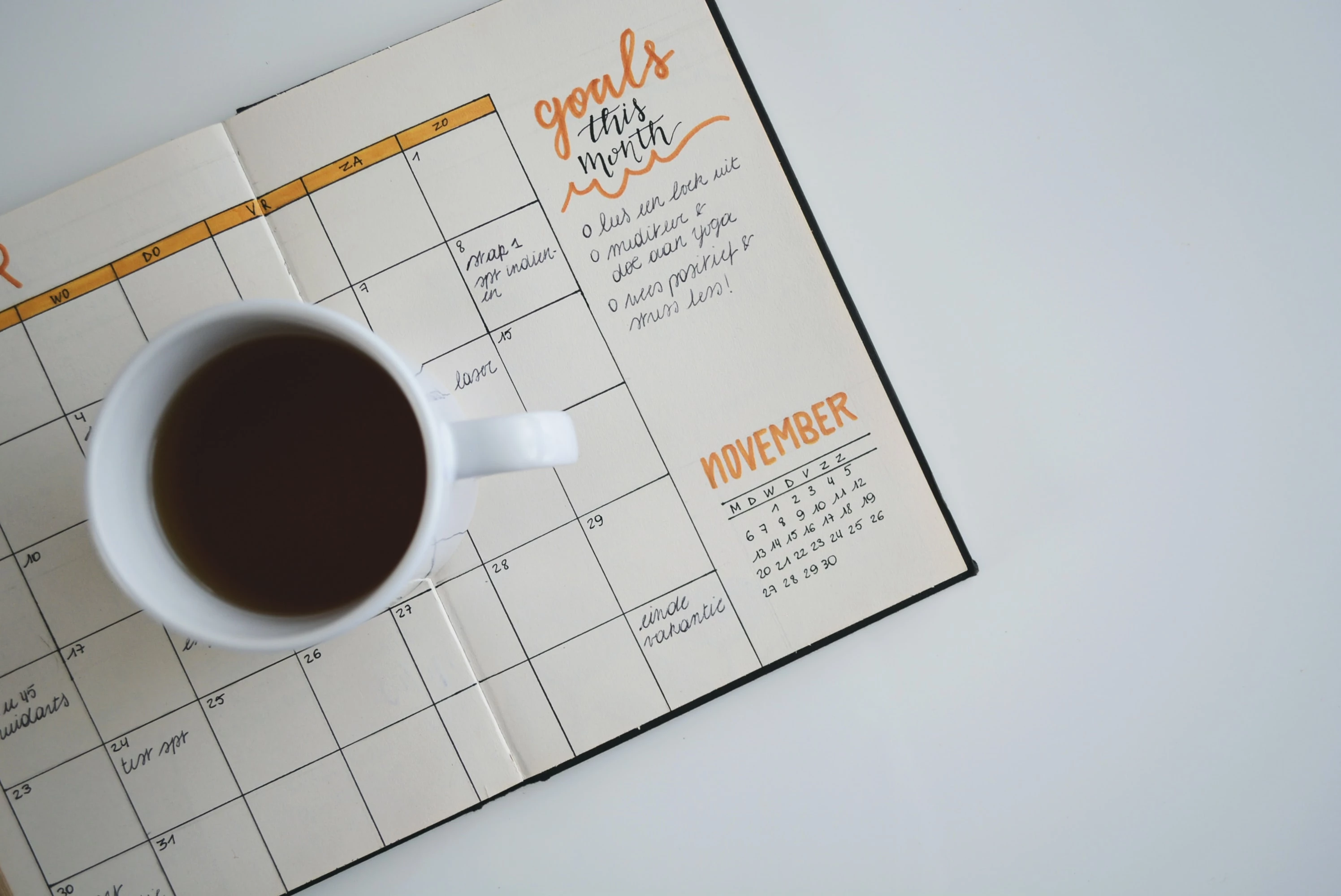How to workout more consistently... and actually enjoy it!
This post may contain affiliate links. This means that if you click on a link and purchase a product or service I recommend, I will receive a small commission at no extra cost to you.

If you spend time reading articles and books about intentional living and personal growth like I do, you’ll likely have heard this piece of advice as a catch-all for all areas of life: do more exercise.
But how do you actually find the time in your busy schedule? And forget that, how do you actually convince yourself that going for a run in the evening is a more desirable option than, say, ordering a pizza and catching up on the latest Netflix reality show?
It can all seem impossible, especially if you’re naturally pretty lazy like me. But good news! You don’t have to hate your life (or your workouts) to feel better in your body.
I’ve been reading tons of resources and books on behaviour change, and I’ve managed to find the perfect strategy to incorporate more mindful movement (i.e. exercise) into your life.
Some of these tips may seem unconventional, but they’ve helped me immensely and I know they’ll help you too.
So, here are 5 tips that have helped me incorporate more movement (and less guilt) into my life, and that you can use to easily make exercise a regular part of your life without feeling like it’s a chore:
1. Find an activity you actually enjoy.

The results are in, and when it comes to working out consistently finding an activity that you genuinely enjoy is absolutely vital. Michelle Segar in her book No Sweat stresses that all movement counts, and the importance of finding joy in the movement that you choose to do.
It’s obvious when you think about it! If you absolutely loathe working out at the gym or running, it’s going to be 100x harder to get yourself out the door in the first place.
If you’re like me, you’ve probably tried a handful of times to start a fitness routine (usually for the wrong reasons, but that’s a whole other post!). You’ve picked a routine, got going, and by day 3 you’re thinking “Why on earth would I choose to do something so boring?”.
The same workout, day after day, can become tedious, and that’s not going to keep you excited to work out!
This time, what you can do instead is experiment a bunch with different forms of exercise, and think outside of the box. Running, walking, gym, snore. Swimming, dancing, bouldering, heck yes!
And why pick one, when you can pick many? By leaning into variety, you’re much more likely to stay excited about it.
I first did this as a part of my social media detox at the beginning of my digital minimalism journey. Without my phone, I needed to fill in the time with productive and self-care-oriented activities.
I tried picking up ballet again, walking in nature, swimming, and many other kinds of exercise, and I found many that I loved and still love to do to this day!
Remember, what you like changes over time, so if there’s something you used to love and now don’t, don’t be discouraged.
Conversely, if there’s something you used to hate, give it another chance! You might be surprised at what some time and a mindset shift will do.
The key is to stop forcing yourself and find something you enjoy. By doing something you enjoy, you’ll be more likely to stick with it and make it a regular part of your routine. Plus, it won’t feel like torture!
2. Set specific and achievable goals.

If you’re having trouble incorporating more mindful movement into your life, take a look at how you’re setting your fitness goals.
If you’ve ever read about behaviour change, you will have heard of Atomic Habits by James Clear. Clear emphasises the importance of setting goals that are specific, that you can measure and actually achieve.
When you set your goal, try asking yourself the following questions:
What am I actually trying to accomplish?
Is this goal realistic?
How can I tell if I’ve achieved this goal?
Before I learned this method, I made goals that I would very rarely ever stick to. For example, “get better at yoga”. Yuck. Is it specific? Nope. Is it achievable? I don’t know, because I don’t know what exactly I’m trying to achieve. Is it measurable? Not with Earth technology.
But “Do 20 minutes of yoga at 8pm every day for one month”? I know where, when, and what to do to achieve this, no problem.
Making my goals more specific makes them much easier to see progress, and curbs feelings of discouragement or demotivation that, let’s be honest, are very easy to be overwhelmed by when it comes to fitness.
Another way of making your goals that makes it easier is by making them self-compassionately. The key here is to be sure to start with small, attainable goals.
These can help you to build momentum, but also take care of yourself and your mental well-being.
Don’t forget to be kind to yourself! Progress takes time, and it’s okay to make mistakes.
3. Get a workout buddy.

Accountability is a key part of sticking to any habit, so why shouldn’t we apply it to fitness too? One of the easiest ways I’ve found to keep yourself accountable for working out is to find someone to work out with.
By finding an accountability partner, you can improve your health while at the same time spending quality time with a friend or family member. This gives an opportunity to set goals together and support one another as you both embark on your fitness journeys.
If you’re like me, you may be thinking “But I’m an introvert! I don’t want to talk to anyone, let alone get sweaty next to someone”.
And that’s fair enough! I’ve found, though, that doing an activity with someone like walking, running, or something similar that’s not face-to-face can make it easier to have deeper-than-surface-level conversations. Provided, of course, that you aren’t both sprinting!
If you don’t have someone in your immediate circle who can be your workout buddy, check the internet! There are plenty of online communities and fitness groups where you can connect with like-minded people who are on their fitness journeys too. Zumba, anyone?
Basically, it can be great to work out with someone, but if it’s not your thing, don’t force it.
4. Make exercise a habit.

Working out can be hard to stick to consistently. So, it’s natural that if we want to exercise more regularly, we need to make it a habit.
Circling back to the Atomic Habits advice from earlier, Clear says that the key to building a new habit is to make it easy to start and link it to something you already do.
So how do you make it easy to start? Try designing your environment to make the habit easier to remember. Simply putting the things you need to complete your workout all in the same place (workout mat, weights, TV remote) minimises the friction required.
Linking the habit to an action you do every day also reduces friction. Do you brush your teeth every morning? I sure hope so! Why not have your workout clothes next to the bathroom and put them on after you brush your teeth?
I had tried and failed many times to implement a yoga habit, so I asked myself:
How can I design my environment to make starting a workout more seamless?
How can I link it to something I already do?
Asking these questions, I realised that the ideal time for me to do yoga was in the evening while watching a show, so I put my yoga mat and shorts beside the couch, instead of away in a closet. I’m not perfect, but I do it way more now!
By being mindful of how you implement your new routines and habits, you’ll be a ton more likely to remember to actually do it. Making exercise a habit can be challenging. Remember though, we’re being self-compassionate here, so we’re looking for progress, not perfection.
And finally...
5. Don't be too hard on yourself.

I know. You’ve probably heard this one before. But at the risk of sounding like a broken record, self-compassion is absolutely essential if you want to implement a new routine that’s sustainable in the long term. And it’s not just me saying it, experts agree!
As you probably know, behaviour change can be really difficult! If it were easy to stick to a workout routine, I wouldn’t have had to research and then subsequently write this article.
There’s so much information out there in the health and well-being space, and plenty of people have opinions on what we all need to be doing for our health. This can make it easy to compare yourself and your routines to other people, but resist the temptation!
Sometimes life happens, and you might miss a workout. That’s okay! You might not see progress as quick as you’d like. That’s okay too!
Go easy on yourself. Fitness is a journey, not a destination, and the better you feel when you work out, the better well-being you’ll have overall and the more likely you’ll be to continue working out.
Again, self-compassion is key to sustainable behavior change and it's important to be kind to yourself along the way. In other words, cut yourself some slack! You're doing your best, and that’s enough.

So that’s us! Now all that’s left to do is get out and do it. Remember, the key is to find something active that you really love and make it a part of your daily routine by building a habit.
Good luck, friend! Remember to be kind to yourself, enjoy the journey and celebrate your progress.
Further reading
If you want to explore more of the ideas mentioned in this article, take a look at these books:
No Sweat by Michelle Segar
Atomic Habits by James Clear